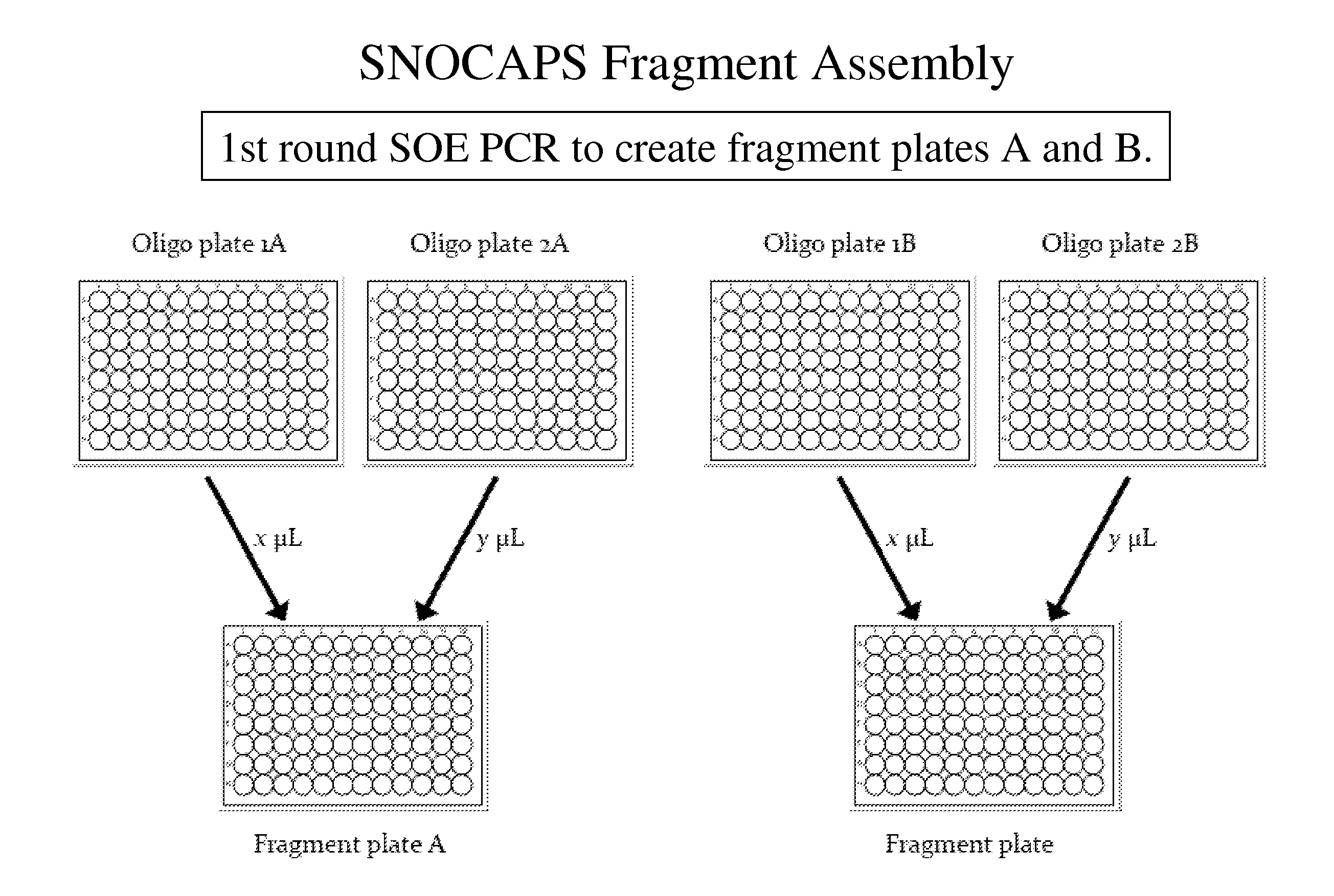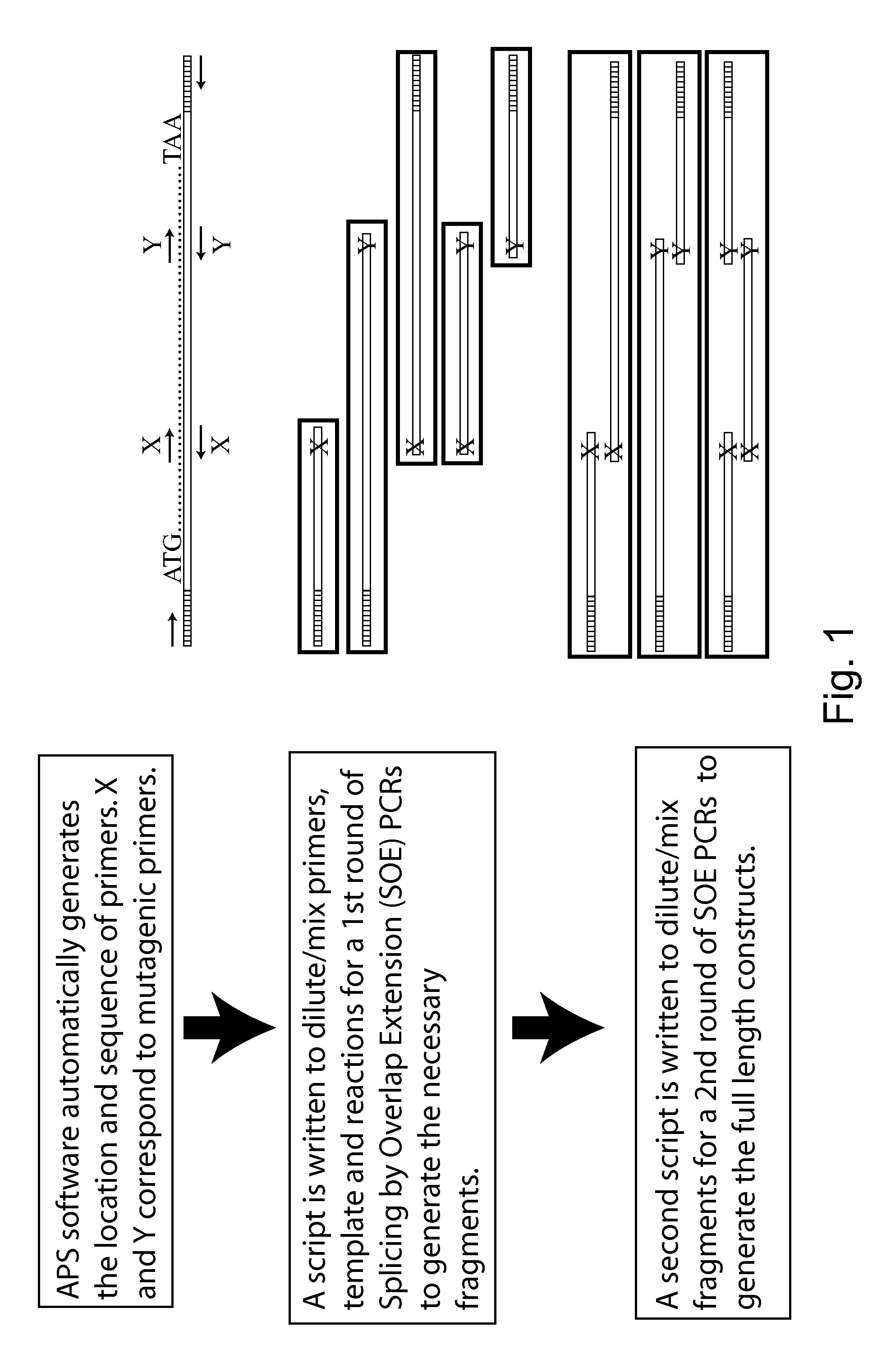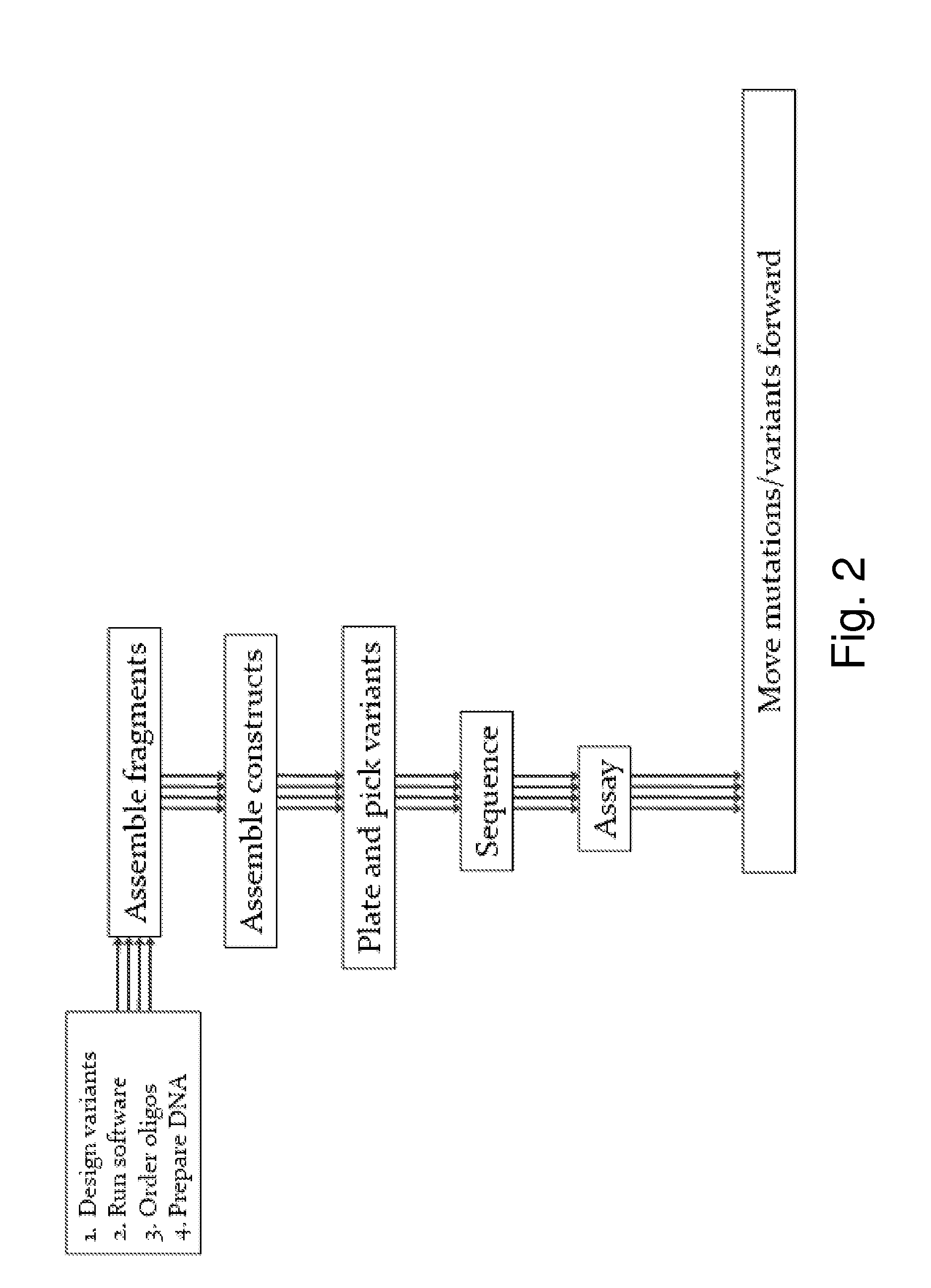Reduced codon mutagenesis
a technology of mutagenesis and codons, applied in the field of making mutagenic combinatorial libraries of biological molecules, can solve the problems of difficult screening, difficult to make such complete libraries, and many challenges, so as to reduce the complexity of libraries, reduce the oversampling of these libraries, and improve the effect of screening efficiency
- Summary
- Abstract
- Description
- Claims
- Application Information
AI Technical Summary
Benefits of technology
Problems solved by technology
Method used
Image
Examples
Embodiment Construction
[0045]The invention provides methods and compositions for reducing mutant library complexity, simplifying library construction, improving library screening efficiency, and reducing oversampling requirements during screening. This is achieved, e.g., by one or more of: (a) providing efficient and tunable codon sets for mutagenesis; (b) optimizing library construction through the use of highly efficient restriction site-independent cloning methods; (c) by pooling library members before transformation into host cells, reducing parallel screening operations; and (d) by optimizing screening, e.g., by consideration of resource models, to reduce oversampling requirements. These improvements to library construction and screening methodologies are optionally used in conjunction with additional strategies for library optimization, such as the use of logical filters to guide residue selection for mutagenesis.
[0046]As noted, the invention provides efficient codon sets for mutagenesis. Preferred ...
PUM
| Property | Measurement | Unit |
|---|---|---|
| three-dimensional structure | aaaaa | aaaaa |
| molar ratio | aaaaa | aaaaa |
| enzyme activity | aaaaa | aaaaa |
Abstract
Description
Claims
Application Information
 Login to View More
Login to View More - R&D
- Intellectual Property
- Life Sciences
- Materials
- Tech Scout
- Unparalleled Data Quality
- Higher Quality Content
- 60% Fewer Hallucinations
Browse by: Latest US Patents, China's latest patents, Technical Efficacy Thesaurus, Application Domain, Technology Topic, Popular Technical Reports.
© 2025 PatSnap. All rights reserved.Legal|Privacy policy|Modern Slavery Act Transparency Statement|Sitemap|About US| Contact US: help@patsnap.com



